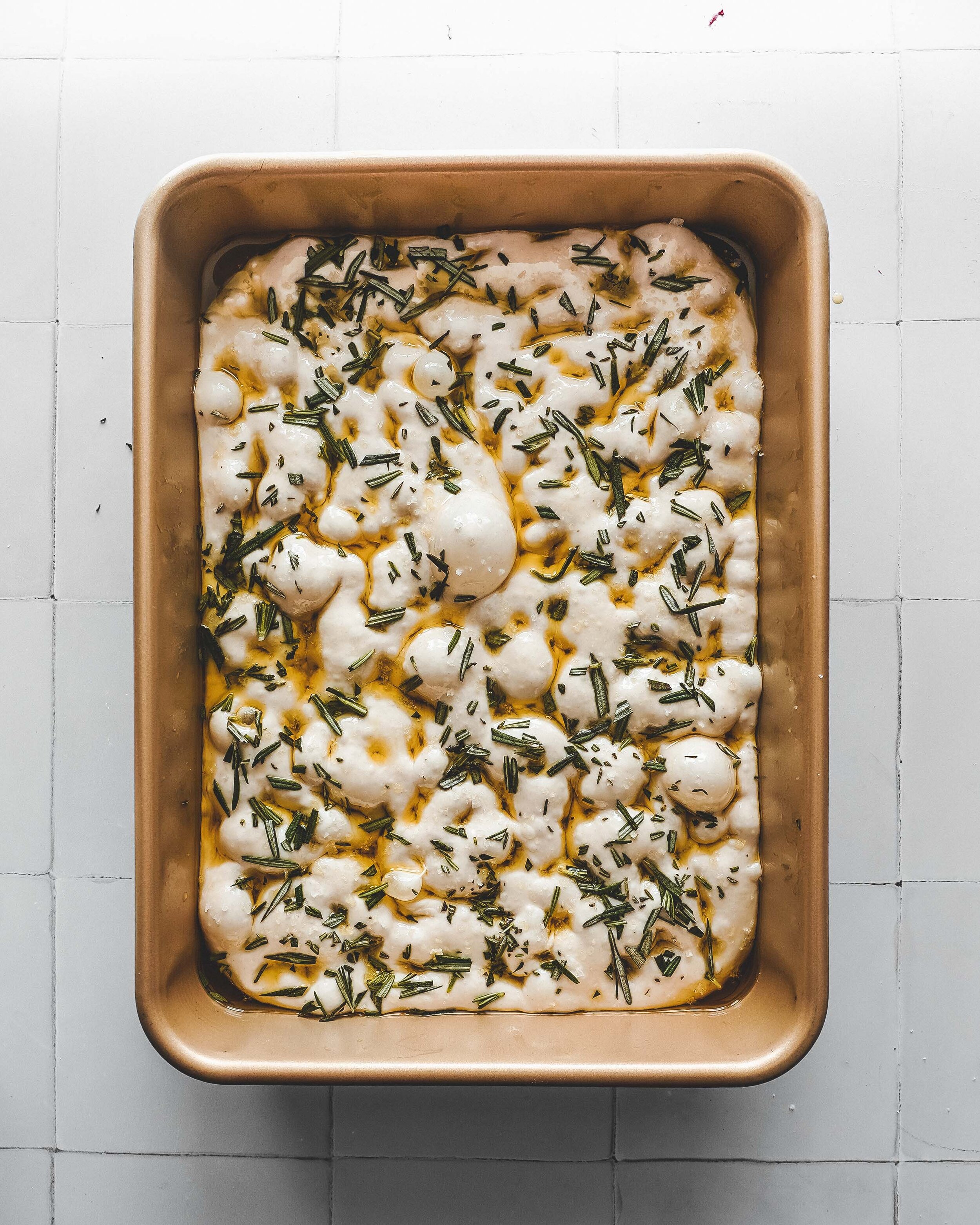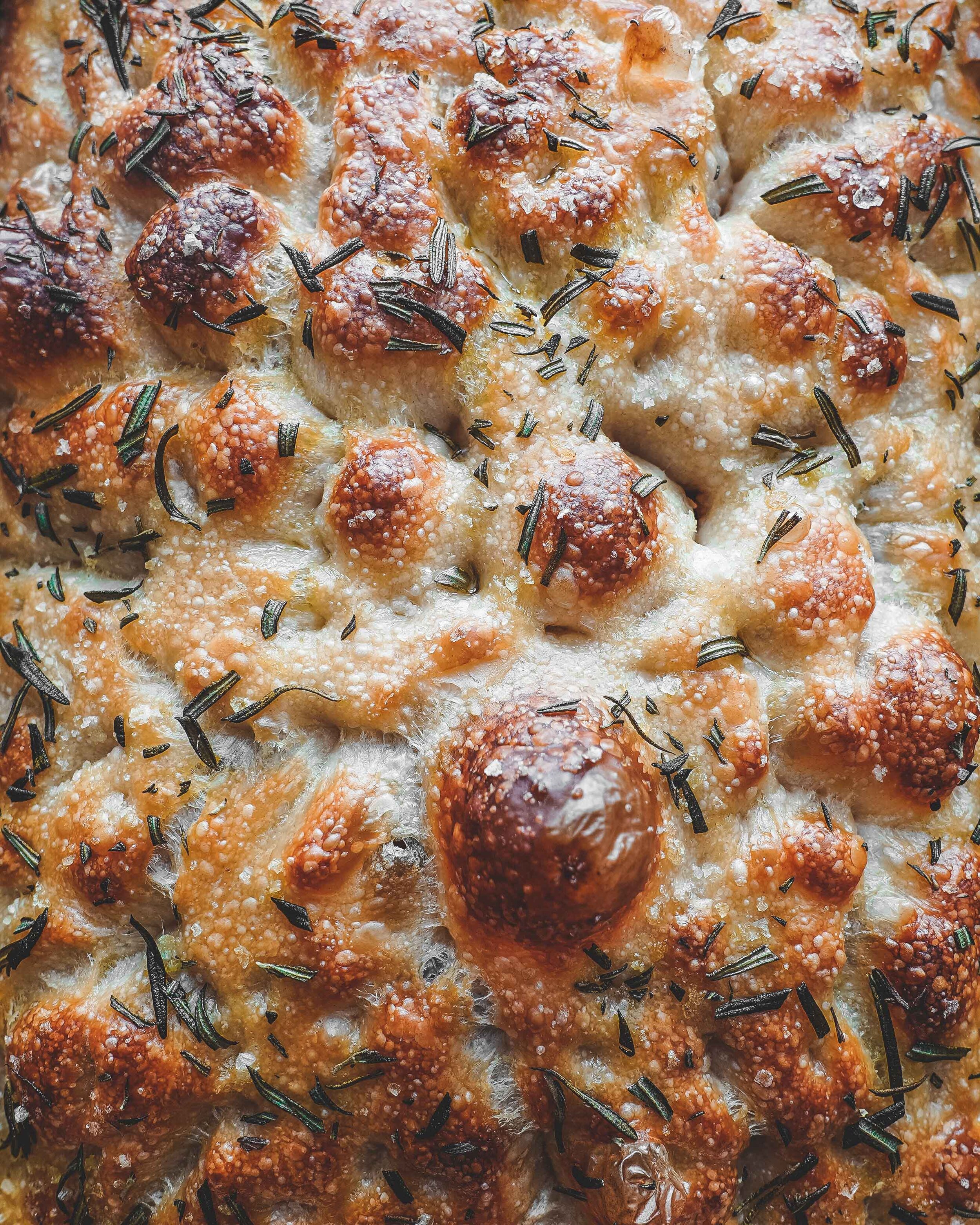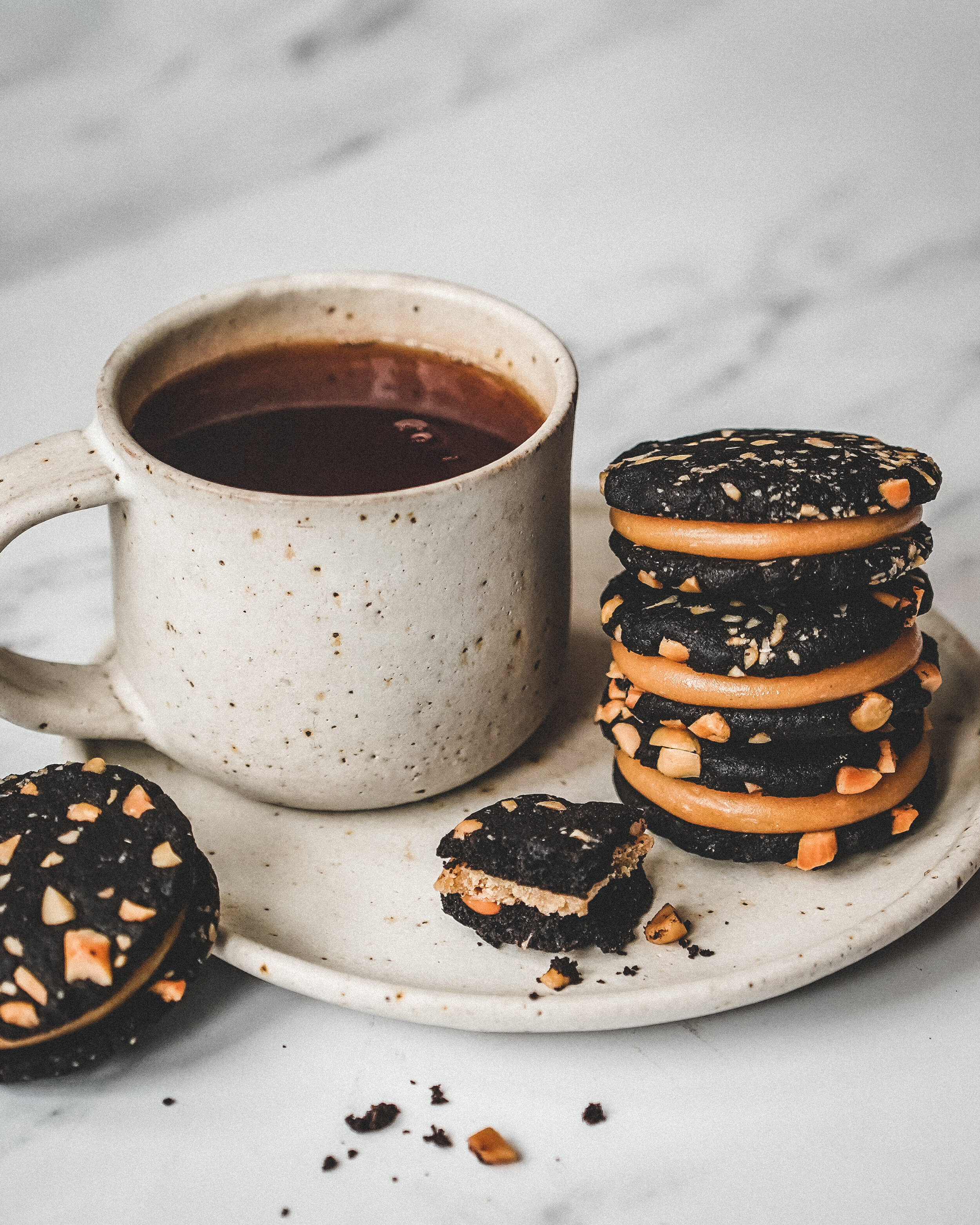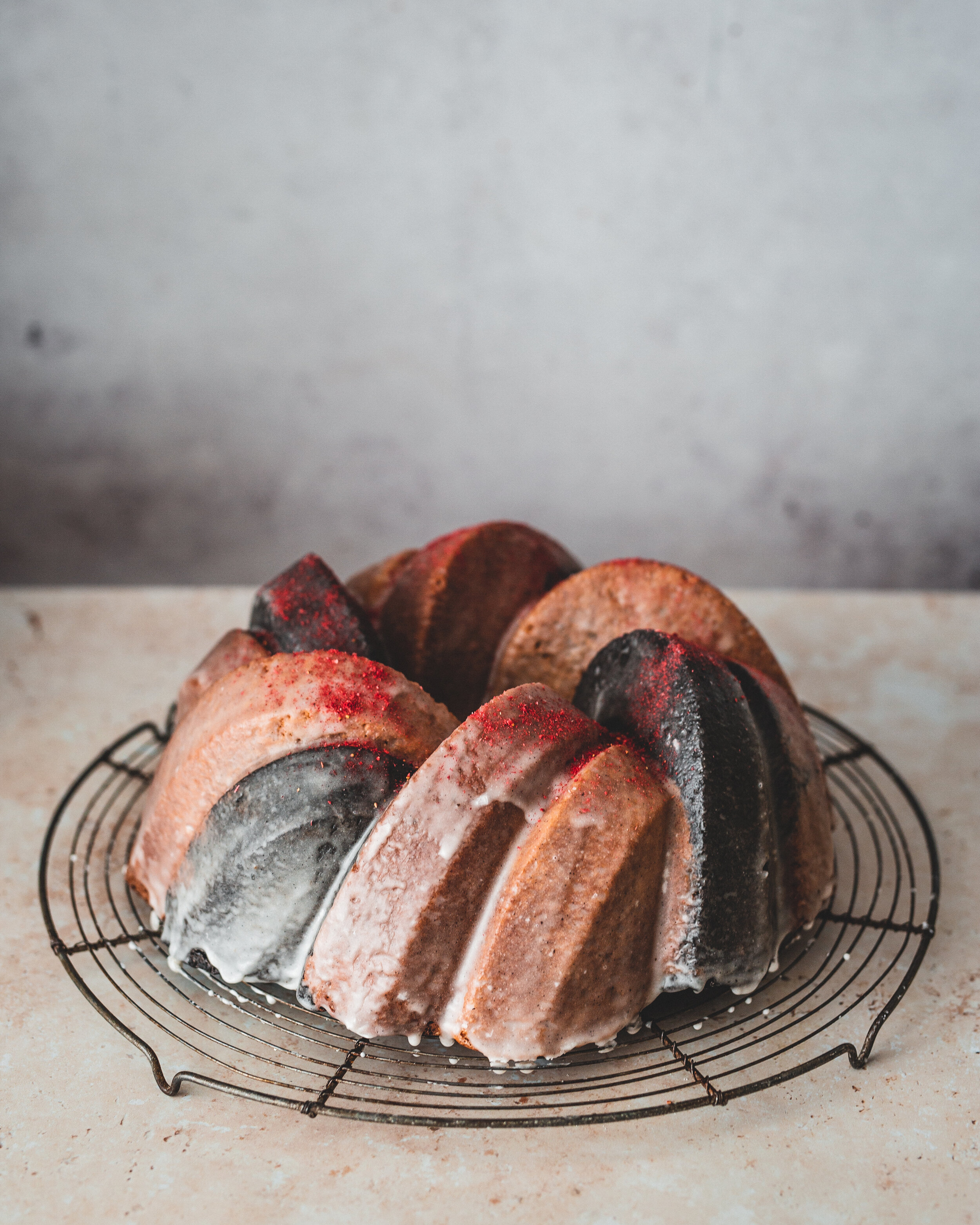I have something shameful to admit. I abandoned my sourdough starter in the back of the fridge for months, forgotten and neglected. After languishing in the fridge for so long I wondered if it could have possibly survived or if could be revived. I am a firm believer that once your starter is properly established it becomes pretty hardy and almost indestructible. Pulling it from the fridge there was a thick dark layer of hooch and underneath was a very thick floury paste, it did not look healthy and it didn’t smell healthy either. I poured off the hooch and discarded all but a tablespoon of the starter that remained. From their I fed the starter as you would normally with a 50/50 mix of flour and water, leaving a day between feeds, and after three days of feeding the starter was back with a bang, it was tripling with each feed. I have made a bunch of focaccia since then and it feels safe to say that this proves even the most neglected starter can be brought back from the brink of death.
The reason I made focaccia instead of traditional country style loaf was a little laziness and a little wanting something different. Most sourdough I make is made with a no knead method, utilising stretch and folds instead of kneading but with focaccia its even easier as there isn’t really any shaping, it really is the easiest sourdough bread.
A word advice on the pan you use for this bread, make sure it is either very good quality non stick or make sure you line it with parchment, there is nothing worse than your hard work becoming lodged in the pan.
Sourdough Focaccia
500g strong white bread flour
425ml water (25-27ºC)
150g sourdough starter (100% hydration and its peak)
10g salt
Olive oil, lots of it
Toppings
Flaked sea salt
2-3 sprigs fresh rosemary, roughly chopped
To make the focaccia dough pour the water, reserving 25ml for later, into a large bowl and scrape in the starter, mixing briefly to dissolve it into the water. Pour in the flour and use your hands to form a shaggy dough. At this stage you are not looking to knead the dough, simply ensuring all the flour is hydrated. To do this I start by stirring with my hand and when it starts to form a more uniform mass I squeeze the dough between my fingers, doing so until it feels like there is no dry spots. Cover the bowl and set aside for about 30 minutes. At this stage, and until the dough goes into the fridge, I like to keep the dough somewhere warm which helps with the fermentation of the dough.
Sprinkle the salt on top of the dough and pour over the last 25ml water. Dimple the dough, squeeze it through your fingers, fold it over on itself, generally working the dough until the water and salt have been combined. During this process the dough can look separated but just keep working it until it comes back into a uniform mass. Cover and rest again for 30 minutes.
After 30 minutes we now do our first set of stretch and folds, which is our alternative to kneading and builds strength into the dough. Using a wet hand go under the dough pull a portion and then stretch it up and over the dough, repeating this four times around the bowl. Cover and rest for 30 minutes, repeating this process 3 more times. At this stage I then leave the dough for about 1-2 hours until the dough has risen around 40-50% and the dough is showing signs of fermentation. The dough should have a jiggle and have lots of bubbles on the surface of the dough. Grease a non-stick 9x13 pan (or a traditional 9x13 pan lined with parchment paper) with 3 tablespoons of extra virgin olive oil. Carefully transfer the dough to the tin and top with a little oil to prevent it drying out. Cover the pan and refrigerate for 18-24 hours.
To bake the focaccia the dough needs brining back to room temperature so remove the tin from the fridge and let it rest for 1-3 hours or until the dough has a jiggle to it. When almost ready preheat the oven to 240ºC (220ºC Fan)
Drizzle the focaccia generously with extra virgin olive oil and then using oiled fingers, dimple the dough all over. Sprinkle generously with flaked sea salt and chopped rosemary, if using. Bake in the preheated oven for 15 minutes then reduce the temperature to 210ºC (190ºC Fan) and bake for a further 15 minutes or until the focaccia is golden brown.
Remove from the oven and carefully transfer the bread from the tin to a wire rack to cool.
Focaccia is best on the day made but is also great for a few days after baking. As with most breads focaccia also freezes brilliantly









